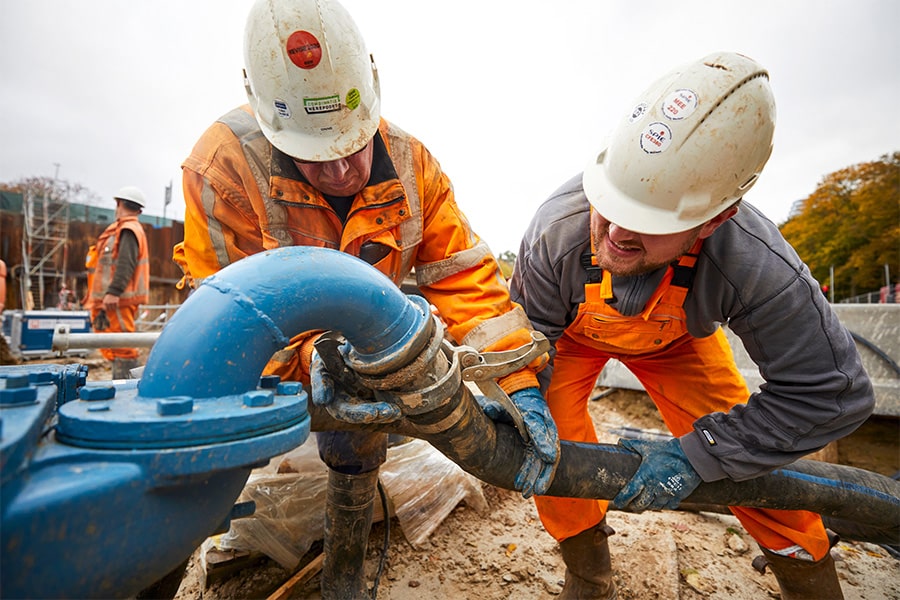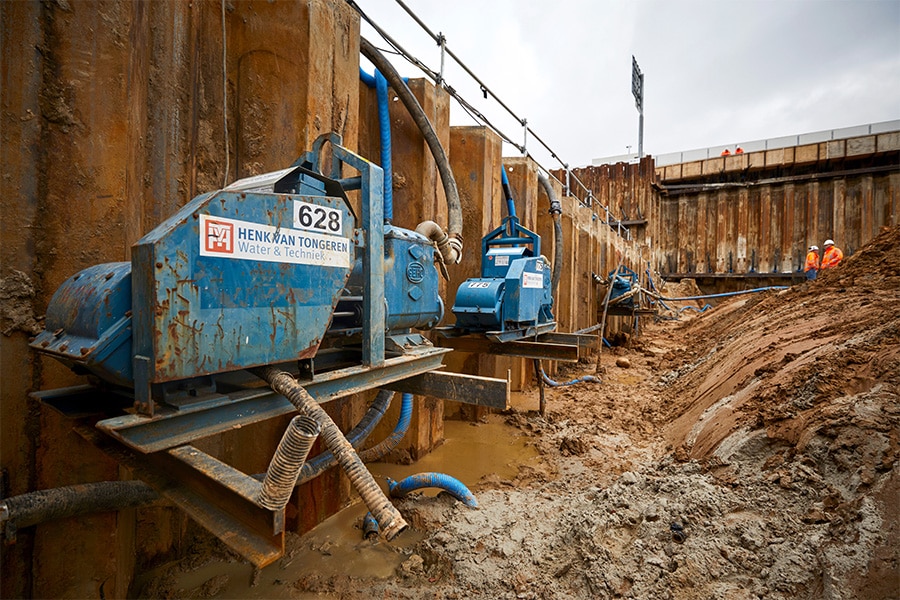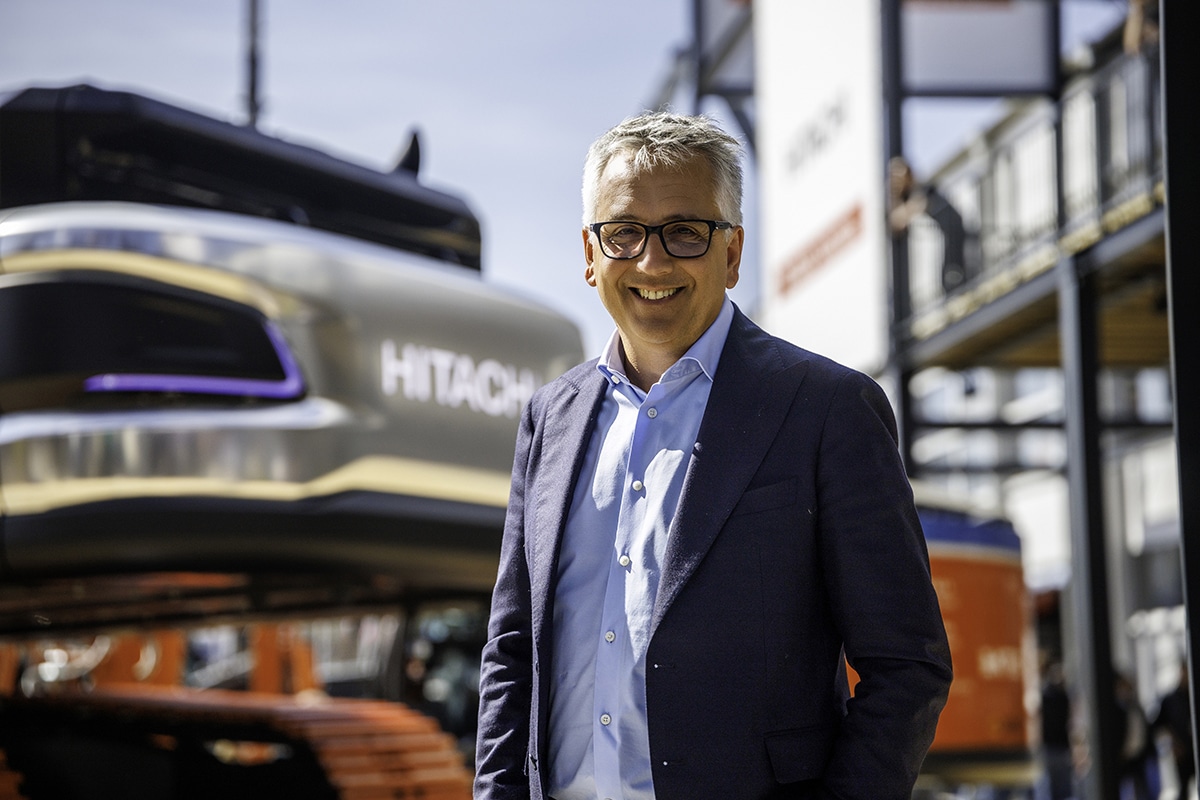
Various drainage techniques ensure 'dry feet' at Ring South Approach
Aanpak Ring Zuid takes place over an area of 12 kilometers and involves the large-scale reconstruction of Groningen's southern ring road. The extensive project is divided into five sub-areas, each with its own specific challenges. Using various drainage techniques, Henk van Tongeren Water & Techniek ensures that the Herepoort combination keeps its feet dry during the realization of this image-defining project.
The southern ring road runs right through the city of Groningen, roughly from Hoogkerk to Westerbroek. The road is important for traffic to and from the city, but also for traffic passing through Groningen. Due to the major growth the city is experiencing, the main gateway to the Martini city is threatening to silt up. The aim of Aanpak Ring Zuid is to improve the accessibility, circulation, quality of life and safety of the city. Some of the work is taking place below groundwater level, for which the Herepoort consortium is grateful to Henk van Tongeren Water & Techniek for its expertise.

81 deepwell pumps
We are involved in, among other things, the construction of three major works of art - the conversion of the Vrijheidsplein and Julianaplein and the construction of the sunken location, begins Jens Dikken, project manager at Henk van Tongeren Water & Techniek. "To start with the latter, initially the idea was to apply filter dewatering. In practice, the soil structure turned out to be slightly different. Because then the entire phasing was also changed and the tunnel was to be built in a different order, we switched to deep-well dewatering. In retrospect, the only right choice, because it led to beautiful, dry tubs. At its peak, 81 deepwells pumped 140 m3 per hour. The groundwater was discharged to the Winschoterdiep via a main outfall. The pumping started in October 2020 and ended in early July this year. During this period, the tunnel deck was also driven in. An exciting moment, because the main discharge line had to be converted without disturbing the drainage process. We solved this by creating a buffer facility of 120 m3 on site and emptying it with tankers. A 14-hour action that went exactly according to schedule."
Return drainage
At Julianaplein, Henk van Tongeren Water & Techniek ran 34 deepwells continuously from May 2022 to mid-June 2023. "They were set up in a ring around the tunnel trough to lower the groundwater with it. Beyond that, a ring was provided with 35 return wells. Of the 70 m3 pumped, about 25 m3 went back into the ground and the remaining water was discharged into the North Willem Canal," Jens explains. To bring the pumped groundwater to either the return wells or the discharge point, a drainage pipeline system was constructed totaling 2.5 kilometers. Finally, at Vrijheidsplein, Henk van Tongeren Water & Techniek opted for a pumping technique with deep filters of 10 meters and drainage. "A different and more cost-effective technique, partly possible because of the shallow depth of the basin and the existing sheet piling construction. Unlike the Julianaplein, where the dewatering was built in phases, we were able to set up the dewatering for the Vrijheidsplein construction pit all at once. The dewatering ran for about a year from February 2022 to February 2023 with a capacity of about 50 m3 per hour. To prevent subsidence of a sewer that had already been installed in an earlier phase, we also installed a piece of return drainage here."
So Henk van Tongeren Water & Techniek's job is largely done with Aanpak Ring Zuid. The project is scheduled for completion in 2024. "It really is an added value for the city and the province, partly because a lot of attention is being paid to improving livability," Jens believes. "It is unique by Dutch standards that you will soon be driving into the city through a park. Nice that we as Henk van Tongeren Water & Techniek were also able to contribute to that."
Heeft u vragen over dit artikel, project of product?
Neem dan rechtstreeks contact op met Henk van Tongeren Water & Engineering.
 Contact opnemen
Contact opnemen



